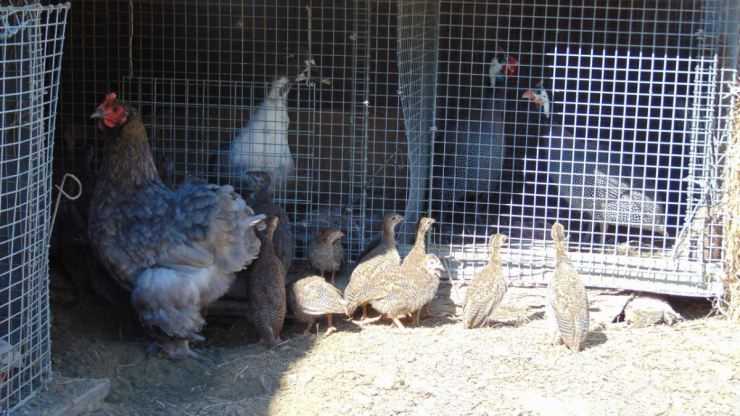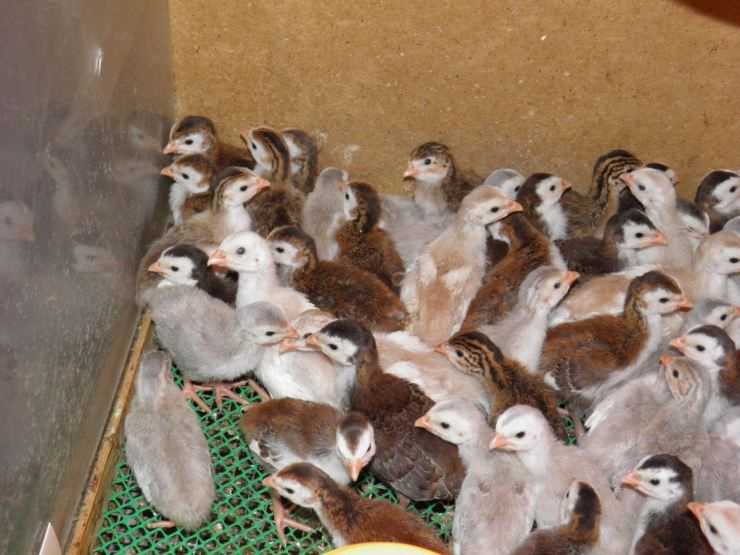#7 Indicators and egg production

The egg production of guineafowls is less than that of chickens. Females lay only in the warm season - from May to October - and give about 90 eggs per season. Some improved and selected breeds carry up to 130–150 eggs per season. In terms of quality and productivity, guinea fowl meat is superior to chicken. It contains more useful protein (20-23%) and less fat (no more than 7.5%). The net product yield is high - up to 85%.
#8 Due to the special structure of muscle tissue and fibers

as well as low content of subcutaneous fat, guinea fowl meat has an unattractive appearance: dry and with a blue tint. This is especially true for representatives of a dark color. Newbies prefer buying white guinea fowls.
#9 Features of breeding at home

Growing guinea fowls at home do not require a lot of effort and financial investment from the poultry farmer. This bird is safely recommended to be bred by beginners. Unlike chickens and other domestic birds, guinea fowls do not need vaccinations or antibiotics. They inherited natural resistance to many diseases from their wild ancestors. In regions with mild climates, birds spend most of the day outdoors, which is beneficial in terms of resources.
